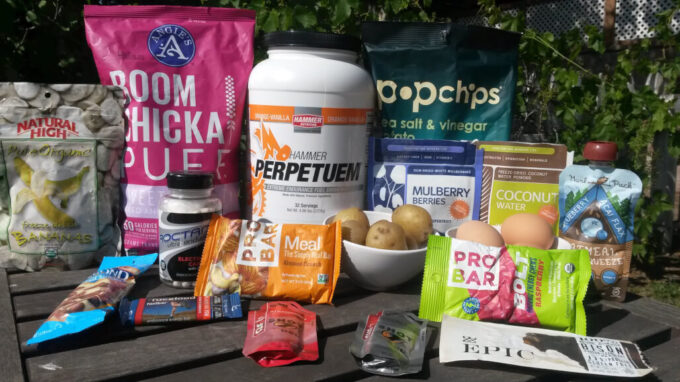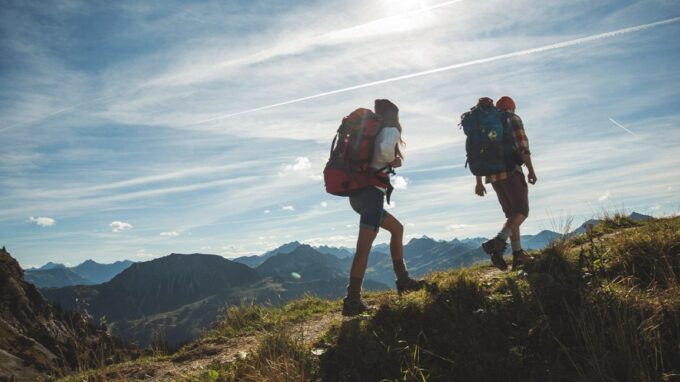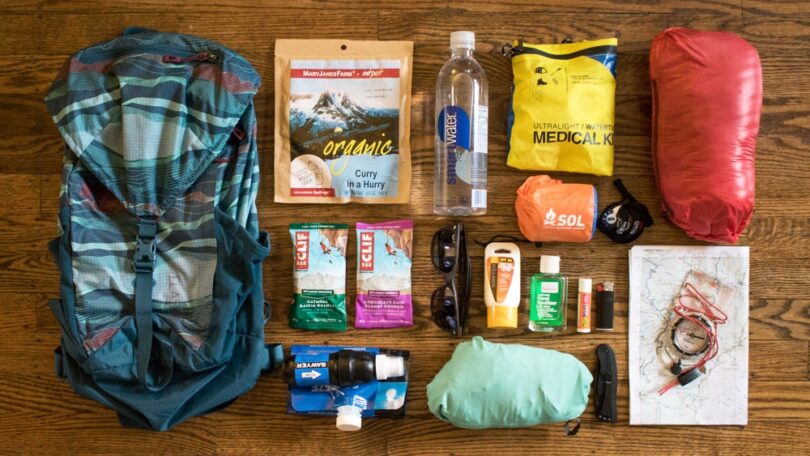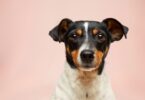The sun’s out. It is the best day to head out for a day hike and enjoy nature with friends or by yourself. Not only that, the new broad networks for trails offered by several states and national parks are more exciting.
Before you get too excited, there are several things you need to plan out: trail location, how far you plan to hike, and the weather forecast. These things help you determine the hiking essentials you have to bring on that day.
If you are new to day hiking, here are some of the standard hiking essentials you need before heading out.
Daypack or Hiking Gear
A daypack is a primary gear essential for day hiking. If you are still going easy on day hiking, daypacks that can carry 11 to 12 liters of gear is enough. It can carry the right essentials for short and simple hikes.
While some do not consider trekking poles as a day hiking essential, if you are going to steeper hikes or are still a beginner in hiking, having one is extremely helpful. Trekking poles help maintain your hike rhythm and take the pressure off your knees.
However, if you think you are ready for treks and exhausting hikes, you need more water, clothes, and gear to get on.
Clothes and Footwear
Planning which clothes and footwear you need to bring greatly depends on the weather forecast. Keep your clothes freshly washed and dried from the laundry service to ensure it smells great before the hike because you know how sweaty you get during the hike. Moreover, do not forget to consider how much protection you need from your clothes.
Types of Clothes to Bring
Aside from bringing moisture-wicking underwear, bring a long-sleeved shirt to protect yourself from harmful UV rays and a lightweight fleece jacket.

Source: cleverhiker.com
- Breathable shirt: You do not need anything fancy during the hike; a breathable and moisture-wicking shirt will do the trick. Do not bring cotton shirts; it absorbs sweat, making you smell during the hike. Also, it becomes heavier as you sweat along the hike.
- Lightweight pants or leggings: Do not go on hikes wearing shorts. Pants or leggings help protect you from scratches, mosquitos, and poison ivy. Do not wear jeans or heavy materials at all costs.
- Rain jacket: waterproof rain jacket is a must-have to protect you during rainy and windy days.
- Fleece layer: You sweat a lot during hikes; merino wool or fleece layers are the perfect clothes that provide warm yet odor-resistant layers.
After you get home from a hike, ensure to appoint a laundry pickup and delivery service to wash your clothes immediately. If you are around New York, it is best to have an appointment at Liox. Do not let bacteria and sweat odor sit on your hiking clothes for a long time.
Moreover, pack footwear that is appropriate for the terrain. Trail runners and hiking shoes are efficient for gentle hikes, but boots provide more comfort and support on rugged trails. If it is a moderate trail, you can wear a lightweight trail shoe, but a high-rise and a thick-soled boot are enough for more challenging surfaces.
Food and Water

Source: eathomas.com
Pack your favorite energy snacks; bars, jerky, nuts, or sandwich. It is important to bring enough snacks to keep you energized for the day. If you are into fruits, apples are sturdy ones that will not get squished in your bag.
Bring enough water for yourself based on the length and intensity of your hike. Some bring 2 liters of water for gentle and short hikes. You have to replenish the water you have excreted from your body. Stay hydrated to avoid dehydration or altitude sickness.
Although it is important to bring enough food and water, the point of having an extra in case of an emergency is crucial.
Navigation Tools
It is easy to go for a walk and only bring your phone for navigation. Do not be complacent enough, and some rural trail sites may not have signal coverage. Instead, bring a map and compass to ensure you can survive if the GPS or satellite messenger goes off. If there is a route description or guidebook, then the better.
Apart from maps and GPS, you need a headlamp and flashlight to navigate around if you are caught on the trail after dark. Before going, make sure your headlamp or flashlight batteries are charged.
Multi-tool and First Aid Kit
Bring with you a mini repair kit to help you fix something. You do not know what may happen during the hike. It is nice to have multi-purpose tool kits. It comes in handy when you have to fix a tear, broken strap, or loose trekking pole. Anything that has to be repaired to prevent it from hindering your hike.
Moreover, do not forget to invest in a portable and lightweight first aid kit. You should always have this in your backpack. It is best to have it for dealing with minor injuries. Throw in a lighter and waterproof match in the first aid kit. You never know you will need to build a fire. Lastly, a small whistle too is beneficial to help seek attention in an emergency.
Don’t Forget the First Rule of Hiking

Source: healthline.com
The first rule of hiking is to pack the right gear without any lacking essentials. Do not put yourself in danger by not bringing any essential things. Moreover, before you go on a hike, you need to research your trail.
Take note of the hike distance, difficulty, trailhead, and elevation gain. It is essential to check the weather and trail conditions first, and do not forget to leave your itinerary with a family or friend.
Final Thoughts
You have to bring yourself these essentials to provide a gentle or exhausting hike. Always keep yourself prepared to come back home safe. Talking about safety, do not forget to bring an emergency and first aid kit. If you are sentimental enough, you can bring a camera to take some shots of nature’s beautiful scenery and your outdoor journal and pen to scribble some of your meditative thoughts.







